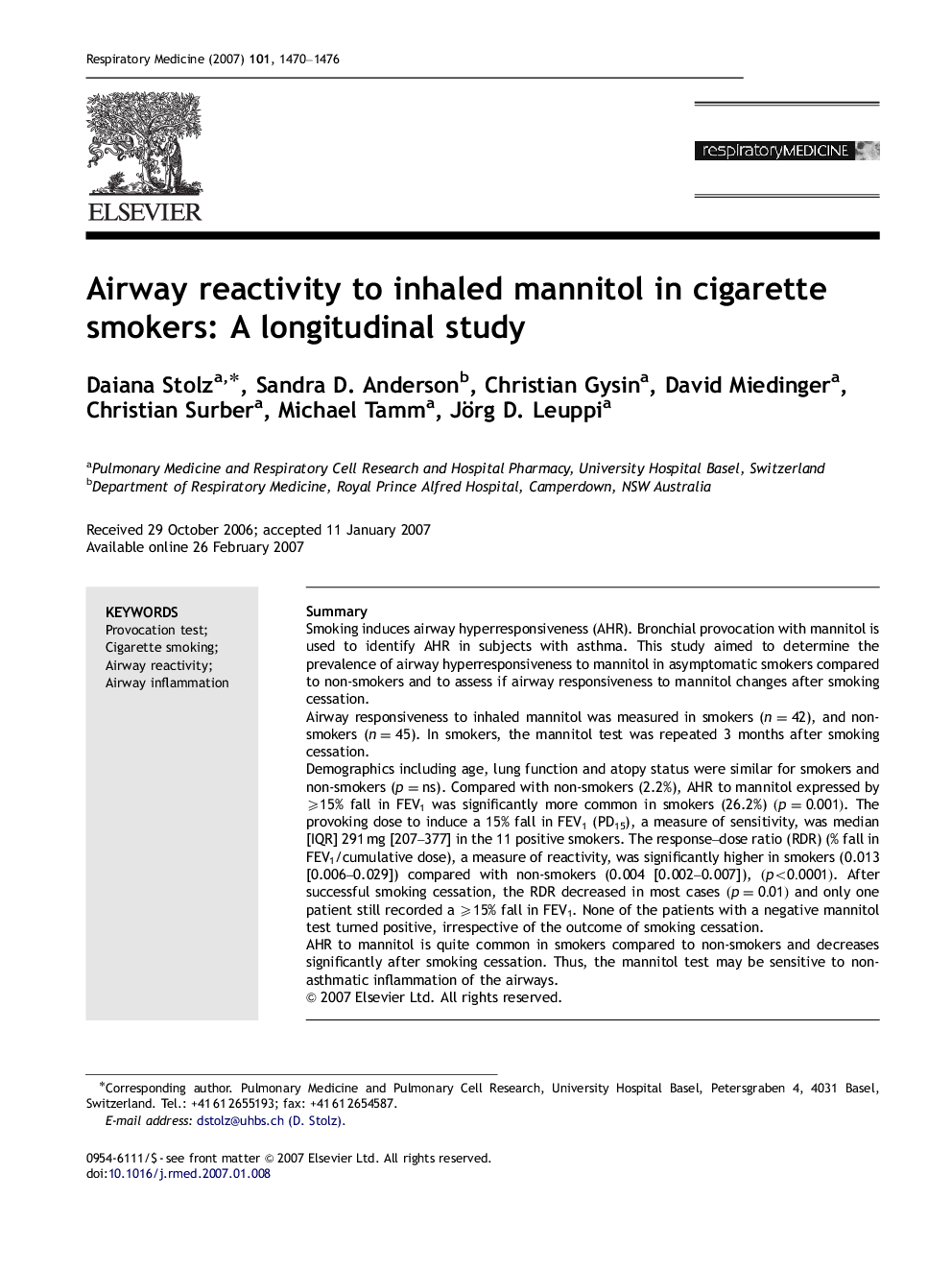| Article ID | Journal | Published Year | Pages | File Type |
|---|---|---|---|---|
| 4211702 | Respiratory Medicine | 2007 | 7 Pages |
SummarySmoking induces airway hyperresponsiveness (AHR). Bronchial provocation with mannitol is used to identify AHR in subjects with asthma. This study aimed to determine the prevalence of airway hyperresponsiveness to mannitol in asymptomatic smokers compared to non-smokers and to assess if airway responsiveness to mannitol changes after smoking cessation.Airway responsiveness to inhaled mannitol was measured in smokers (n=42), and non-smokers (n=45). In smokers, the mannitol test was repeated 3 months after smoking cessation.Demographics including age, lung function and atopy status were similar for smokers and non-smokers (p=ns). Compared with non-smokers (2.2%), AHR to mannitol expressed by ⩾15% fall in FEV1 was significantly more common in smokers (26.2%) (p=0.001)(p=0.001). The provoking dose to induce a 15% fall in FEV1 (PD15), a measure of sensitivity, was median [IQR] 291 mg [207–377] in the 11 positive smokers. The response–dose ratio (RDR) (% fall in FEV1/cumulative dose), a measure of reactivity, was significantly higher in smokers (0.013 [0.006–0.029]) compared with non-smokers (0.004 [0.002–0.007]), (p<0.0001)(p<0.0001). After successful smoking cessation, the RDR decreased in most cases (p=0.01)(p=0.01) and only one patient still recorded a ⩾15% fall in FEV1. None of the patients with a negative mannitol test turned positive, irrespective of the outcome of smoking cessation.AHR to mannitol is quite common in smokers compared to non-smokers and decreases significantly after smoking cessation. Thus, the mannitol test may be sensitive to non-asthmatic inflammation of the airways.
